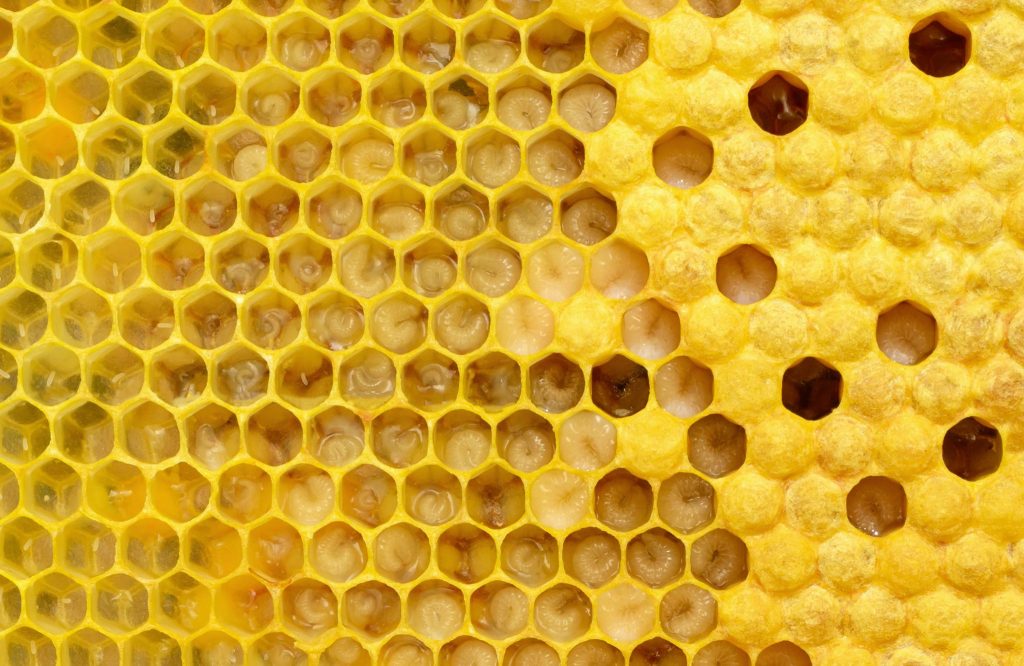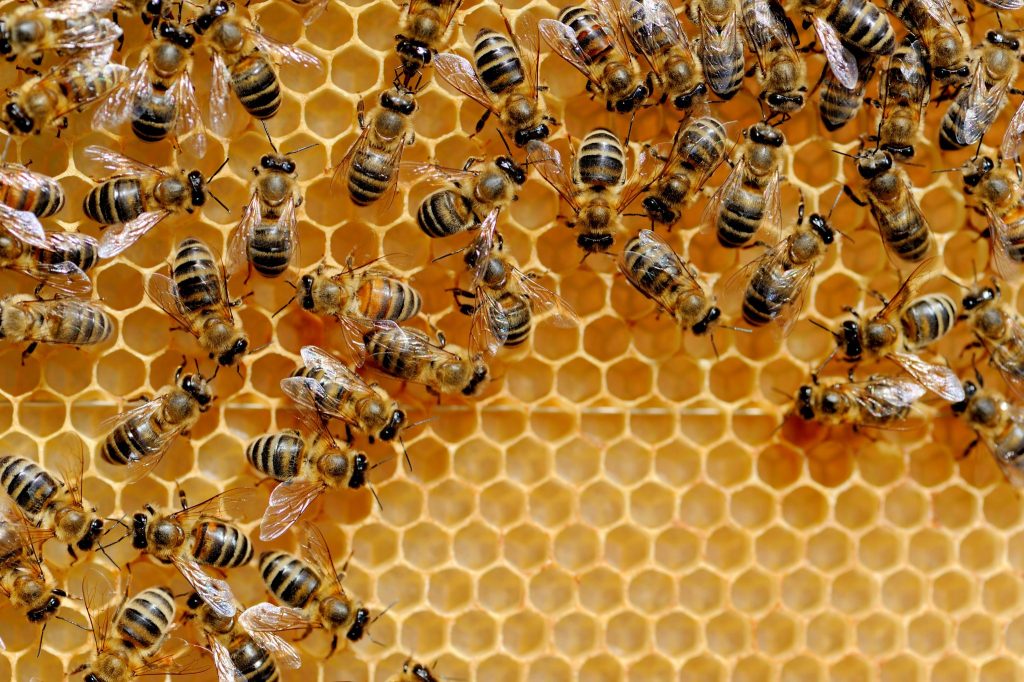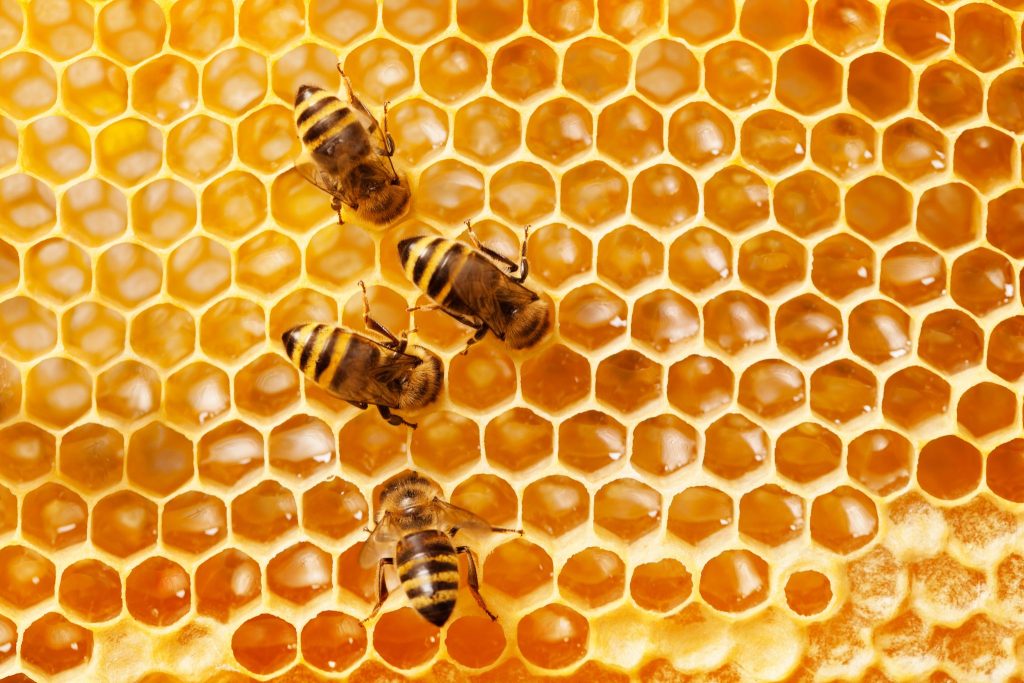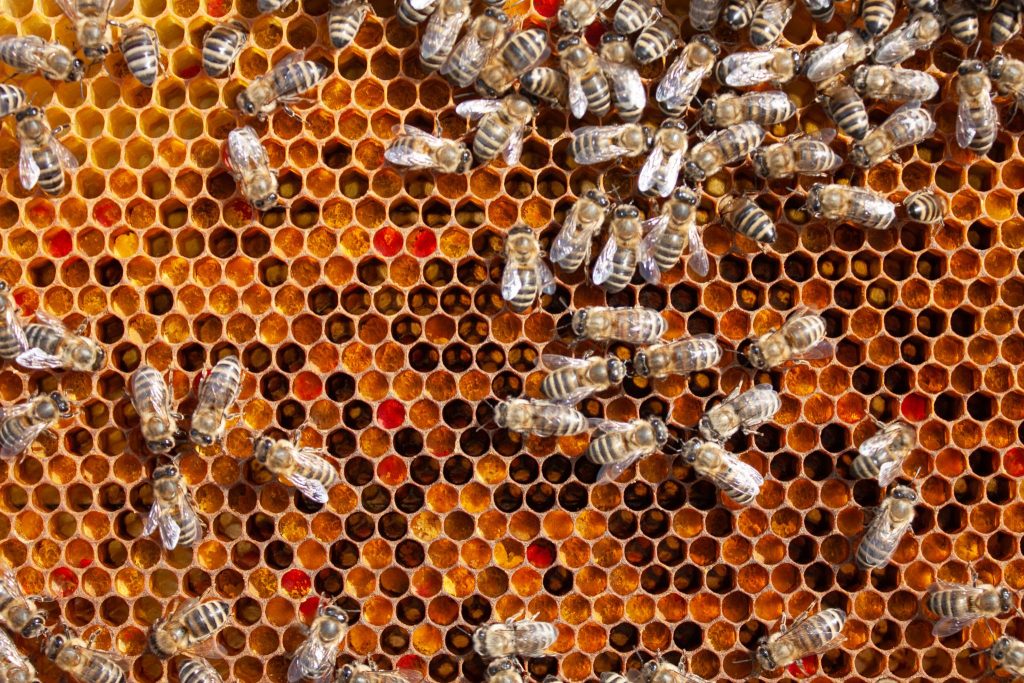If you purchase an independently reviewed item through our site, we earn an affiliate commission. Read our affiliate disclosure.
Honeybees are organized social insects that can survive without human intervention. They have lived and thrived on their own for years and have even adapted to harsh environments. Humans have had to learn a lot about these creatures after they started domesticating them. Indeed, honeybees play an important role on a global scale. Besides providing various products for consumption, many crops and flowering plants rely on bees for pollination. As a matter of fact, there has been an increase in demand for pollination services within and outside of the United States, especially with tree plantations such as almonds that rely on bees for pollination.
Beekeepers have therefore been reaping huge rewards from apiculture (the practice of beekeeping). Unfortunately, all these benefits do not come cheap. Raising honeybees involves a lot of work and that includes reading beehive frames, and understanding what’s going on at a glance.
In this article, we will explain exhaustively how to identify the different types of cells found in honeybee colonies. Expert beekeepers find it easy to identify these cells at a glance. This naturally comes with experience. Hopefully, you’ll be able to better identify these cells by the end of this article.
What is a Cell?
Honeybee cells or honeycombs are hexagonal-shaped cells that are made by worker bees using wax scales produced by special organs in their bodies. These cells serve various purposes depending on the needs of the colony. Some of the cells are utilized as honey and pollen reservoirs, whereas others will act as brood chambers for nurturing future generations of bees – queens, workers (female bees) and drones (male bees). The queen bee will lay one egg per cell. She will lay about 1,500 eggs in a single day. She produces pheromones without which the colony cannot work together.
The cells are hexagonal in shape since this is the best design that can hold more honey and requires less wax to build. The honeycombs require standard temperature levels of between 30 to 35 °C (86 to 95 °F) in order to remain in their solid state. It is therefore the role of the worker bees to maintain these optimal conditions within the colony. This is achieved through clustering when cold, and spreading out and fanning when hot.
Honey that is stored in the cells must have the required level of water content. The worker bees will keep fanning the honey until the sugar level is 80 per cent. Once this is achieved, the cell is capped using wax.
Honeybees will also collect pollen during their foraging expeditions. The pollen grains stick to the plumose hairs on the worker bee’s body. She will clean up and store them inside a pollen basket before transporting them back to the colony. The pollen deposits will then be deposited into cells, packed tightly and mixed with honey before sealing off with wax.
Identifying Queen Cells

The queen cells are of three types, namely, swarm supersedure and emergency cells. A good understanding of these three will help you understand what to expect from the honeybee colony.
The queen cell is usually the largest when compared to other cells. The worker bees will make a queen cup after which the queen will lay an egg into it. This cell will then be enlarged by the workers resulting in a peanut-shaped cell.
Each type of queen cell stands out and is easily identifiable. You can point out either of these if you see peanut-shaped cells approximately 1 inch long hanging vertically on the honeycomb. They, however, will hang in different locations and will be created for different purposes.
The supersedure cell is created when the workers find it necessary to replace an existing queen for a number of reasons. First off, a sick queen will mean the colony is no longer productive and this could mean a lack of a future generation. The queen should then be replaced. Secondly, an old queen will mean lower productivity and a need to replace her. The workers will therefore prepare a young queen to replace her. They will build a supersedure cell in the middle of a frame for this purpose.
On the flip side, is the swarm cell that is created when a honeybee colony is very strong and needs to split into two. Huge colonies become difficult to manage and hence the need to split and move out. The worker bees will therefore create a swarm cell that will nurture a new queen that will keep a part of the colony as the older queen moves out with the rest. The swarm cell will therefore be built on the bottom of the frame, hanging vertically with its opening facing downwards. This is unlike drone cells that exist in groups and are found on the edge of the frames.
Emergency queen cells are similar to the supersedure but are created only when something drastic happens, like the untimely death of a queen.
Each type of queen cell is peanut shaped and has rough surfaces. They also have openings that face downwards. The presence of swarm cells is an indication that the colony is about to swarm and therefore you need to respond appropriately. This might mean splitting the colony into two. Supersedure cells, however, will mean a queen needs to be replaced and you do not need to worry.
Identifying Brood Cells
Brood simply refers to the various developmental stages of the honeybee. These include eggs, larvae, and pupae. The frame that is occupied by the brood is called the brood frame. Some parts of the brood frames at the top corners usually have nectar, pollen, or honey. Otherwise, the rest of the brood frames will either have brood in various stages or are empty.
Brood cells have been categorized into two, namely, capped worker cells and capped drone cells. These cells are capped by the worker bees once the egg and larvae stages have been completed. The larvae will spin their cocoon and develop into the pupa inside this cell.
The queen bee will lay a single egg in each of the brood cells, ensuring it is stuck to the bottom of the cell. She will lay hundreds of eggs at the same time, especially during peak season. All brood larvae will be fed on royal jelly for the first three days. This is a substance produced by special glands on the heads of young honeybees. After three days, the rest of the brood will eat nectar, pollen, and diluted honey. The queen bee will be the only one fed solely on royal jelly.
A fully matured worker bee pupa chews its way through the wax capping, while the drone pupa will be assisted by adult workers to chew and get out of its cell. The emerging bee is fully matured and is referred to as an adult honey bee.
The brood cells include:
- Capped worker cells – these are slightly domed in design and are found in the middle of the frame. They are not translucent as the capped honey cells and are nearly flat.
- Capped droned cells – these tend to be larger in diameter unlike worker cells and have domed though much higher. They are found in groups and at the frame edges. The overall shape is a round bullet shape.
Used brood cells are usually recycled by honeybees. These may be used for raising additional brood or act as pollen and honey reservoirs. Honeybees are expert resource managers, making the best use of available resources.
Identifying Worker Bee Cells
Worker bee cells are the most predominant in the honeybee colony. They are located within the central part of the comb face and are easy to identify since they have uniformly flat capping. The worker cell will take 21 days to mature and they will hatch in huge numbers. A single honeybee colony has about 80,000 worker bees. They make up about 98% of the colony population.
The worker bees are the most diverse and interesting to study. They are ideally the main engine of the colony given the many roles they play:
- They care for the queen.
- Nurse the brood.
- Cleaning of the nest.
- Hive ventilation.
- Building combs.
- Orientation flight.
- Defend the colony from attacks.
- They provide food for the colony by foraging.
- Find food sources and direct colony members.
- Make important decisions like swarming and changing diet.
- They make honey through a complex process.
The worker bee demonstrates top-notch cognitive skills and the ability to learn, communicate, navigate and make decisions. They are however poor when it comes to laying eggs. While they do have properly functioning ovaries, they can produce only infertile eggs.
Capped worker bee cells can be confused easily with capped honey cells. But you can distinguish between them by the slight protrusion on these cells, unlike the honey cells that are slightly indented. The worker bee cells are also the smallest given the size of the worker bee. These cells are always located on the lower part of the comb.
During the first year of brooding, the worker cells will have a light colour, but this will change over time into a darker colour. Recycling the combs leads to the darkening of the combs. This is due to the use of shellac coating by the worker before another egg is laid into the cell. It is however important to deliberately rotate combs since pesticides can build up over time due to overuse. The cells will also reduce in size over time and hence not ideal for brood.
Identifying Drone Cells

Drone cells are perhaps the easiest to notice in a beehive, apart from queen cells. They are used for raising drone broods that will develop into male honeybees. The main task bestowed upon these male bees is mating with the virgin queen bee. They also play the important role of spreading the queen’s pheromones all over the beehive.
The drone cells are often seen as harmful to the honeybee colony by some beekeepers. These cells take much longer to mature and tend to be preferred by the varroa mites. Removing them is thus a strategy for combating these pests. This should however be discouraged since every colony should have a certain number of drone bees at any given time. Proper drone management is recommended instead.
Drone cells can be spotted as large bullet-shaped capped cells. They can also be compared to an eraser on a pencil end. Older drone cells tend to be darker, unlike newly built drone cells that are lighter. The overall surface of the drone combs can be seen as rounded bumps that cannot easily escape the eye. You will find drone cells on the edges of the brood, given the fact that drone brood requires slightly lower temperatures. The cells are also slightly larger than worker bee cells and have dome-shaped capping. The diameter of the capping is also bigger than that of worker bee cells, though smaller than that of queen bee cells. Drone cells also exist in groups and will be found within the same location.
A greater number of drone cells can be found during early spring prior to swarm season. After these, the number will decline. At the same time, the number of worker bee cells will increase as the season progresses.
The availability of large numbers of drone broods is an indication of a stronger colony. Adult drone bees depend fully on worker bees since they cannot feed themselves. They mainly thrive on honey, gland secretions, and pollen. Without these resources, it becomes a challenge to maintain huge numbers of drone bees. A continuous supply of pollen makes it possible to cater for these male bees.
A colony may fail to feed the drone bees due to declining pollen and nectar supplies. If this occurs, the drone bees weaken and will eventually be evicted from the beehive. If pollen supplies continue beyond normal seasons, then drone eviction will be delayed. The absence of a queen bee will also delay the eviction of drone bees since their services are still required.
Identifying Honey Cells
Honey storage cells as suggested by the name, imply the cells that have been made purposely for honey storage. These are the same size as worker cells and are crucial for the survival of the honeybee colony. The honeybees rely on two main kinds of food, namely, honey and pollen. Honey is made from nectar, whereas pollen is collected from anthers of flowering plants. Honey is the main source of energy, whereas pollen is the main source of protein.
The nectar collected from flowers is carried on the sac of the worker bee into the hive, where it passed from one worker to the next. This process reduces the water content in the nectar from 70 to 20 per cent. This transfer process transforms the nectar into what is referred to as honey. In some rare occasions, the nectar can be stored directly in cells without undergoing mouth-to-mouth transfer. This will however be subjected to fanning in order to eliminate most of its water content.
Once the honey is ready for storage, it is placed in the honey cells and wax capped. This thus brings us to the two types of honey cells:
- Capped Honey Cells – the process of capping the honey cells begins when the required moisture level in the nectar has been attained. A thin beeswax film is used for capping the cells in order to inhibit further evaporation of the moisture. Capping will also help protect the honey from contamination. It also helps prevent predators from easily accessing the honey. This capping is often translucent, making it possible for the honey inside to be seen. When the need arises, the worker bees will chew through the wax capping and then proceed to utilize the honey therein.
- Uncapped Honey Cells – these are basically the open honey cells with wet shiny nectar. The nectar is yet to be transformed into honey with a sugar content of 80 per cent and more. This, therefore, means that the water content is 20 per cent or more at this stage. The worker bees will thus leave the cells open for the moisture to evaporate until it attains the required condition.
Honey cells are characterized by lighter yellow combs. The capped worker combs are often confused with capped honey cells. Nonetheless, newly capped honey cells tend to be slightly indented, unlike capped worker brood combs that have some protrusion from the cell. The brood cells are also darker, especially those subjected to overuse. Newly capped worker brood cells are however much lighter, hence the confusion with capped honey cells.
Identifying Pollen Cells
Pollen as explained earlier, is the main source of protein for honeybee colonies. The worker bees collect pollen from flowering plants since it is a vital part of the colony’s nutrition. Besides proteins, pollen is rich in other important nutrients such as lipids, vitamins, and minerals.
There are many different types of pollen depending on the source. The key differentiator is the colour since this will differ depending on the type of flower. Pollen will also have a different appearance depending on the source. For instance, there is matte pollen, glossy, and others mixed with nectar.
Pollen cells, as suggested by the name, are cells used as pollen reservoirs. There usually exist a number of these cells within the colony, adding up to 100 pounds of pollen within a season per colony. The worker bees collect pollen using pollen baskets on their feet. This is then transported back to the beehive.
The pollen is packed into brood cells close to the edge of the frame, and will be used for making bee bread when needed. The bee bread, for the most part, is consumed by the nurse bees (worker bees that care for the brood), since this helps with the production of royal jelly required for feeding the larvae. The pollen is mixed with glandular secretions and beneficial microbes, thus enhancing the quality of the bee bread. This is consumed by a colony within months, with a single colony taking an average of between 15 to 55kg of pollen annually.
Conclusion
The cell, and by extension, the honeycomb, is perhaps the most vital part of a beehive. It’s where food is stored and future generations of bees are raised. There are various types of cells within the colony depending on its purpose. These include the queen cells, worker bee cells, drone cells, brood cells, pollen cells and honey cells. Reading beehive frames with understanding will make your work easier as the beekeeper. Proper knowledge will help you better understand the essence of each and how best to handle these.
References
- https://beekeepingcoach.com/reading-a-honeybee-brood-frame-a-comprehensive-guide/
- https://wisconsinpollinators.com/Bee/BA_BroodFrames.aspx
- https://backyardhive.com/blogs/beginning-beekeeping/honey-comb-identification-brood-nest
- https://www.omlet.com.au/guide/bees/beekeeping/frames/
- http://www.talkingwithbees.com/brood-comb-photos
- https://www.beepods.com/determining-the-cause-of-your-dead-honey-bee-colony/
What are your thoughts on this article? Leave a comment below and let us know.
 BeeKeepClub Resources and Guides for Beekeepers
BeeKeepClub Resources and Guides for Beekeepers




After over 30 years of bee keeping it is good to refresh your knowledge. Your articles are excellent and wish I had them when I started.
Hello
You have a vast experience in beekeeping. I want to know why swarming queen cells are at the bottom and emergency or supersedure in the middle of the comb?
Good question. This is not something I’m 100% sure on. However, my guess would be that it allows the new queen coming out of that swarm cell to easily leave the hive and start a new colony.
Perhaps Ashley could provide further insight.
Very interesting. Has a lot of information I did not know about cells.
Thank you
Donna V
Very good article, thanks for the clear and simple explanation – with photos.
Much appreciated information. Thanks
Do bees store water in cells within the hive or just within their body?
Bees don’t store water in the cells. They go outside the hive to get their fill of water. That’s why it’s important to place beehives near fresh water sources, or use a bee feeder.
Thanks for an informative article. You have done full reading of a beehive for us. Will be wating for more aspects.
From various aspects of a bee colony we know it’s an intelligent social insect. Then why the size of a honey or pollen storage cell is same as worker cell and not bigger as drone cell?
Drones and queens are larger in size than regular worker bees. Hence, they need a larger cell to accommodate their size.
That’s true for breeding purpose but what I want to know why they don’t construct big cells to store honey or pollen. When they know how to build big cells. Still why they prefer small cells of worker size to store honey and pollen.
The cells are as small as they care because it makes to easier to cap (seal). All cells in a honeycomb are capped with wax for storage. If the cells were larger, I figure capping it would be harder for the bees.
O dear they cap drone cells too. That too, convex. If big cells are more they have to construct less number of cells to store same quantity of honey and pollen.
O dear they cap drone cells too and that too convex. If they will store honey and pollen in bigger cells they will store more of it. I have noticed old drone cells are sometimes used by bees to store honey.
It would be helpful to show the different kinds of cells and their content as they appear together on a wax frame. Label the different kinds of cells so the reader can see them in context.
Thank you for the suggestion.
Very articulate article; pictures were very useful. Newbees might find it a bit confusing if they are not too familiar with bee frames and cells but with more experience, only three years with 21 hives in my case, I in found the article very useful. I have experience with livestock/cattle and fish culture and consequently regard bees as just another type of livestock that require standard rules of animal husbandry; that is where I begin to manage my bees. Stress in livestock is often the first trigger for disease; also true for humans. In the case of fish, which are… Read more »
You are most welcome and thank you for commenting.
O stress management always pays. I would love to see the photos of insulation done by you in your bee boxes. You can send me an email on [email protected]
If we understand our pets and do the things accordingly, it will disturb them minimum and will be a win win situation. But don’t be happy to receive stings please wear atleast veil.
You said it. Stress is the root cause for many problems. If we will try to understand the stress situation of our pets and behave accordingly it will be a win win situation.
I would love to see photographs of your bee boxes to know how you have insulated them.
Please wear veil it’s necessary. Sting in the mouth is dangerous.
After reading such a elaborative article I know theory becomes stronger. However in practice still number of doubts remain especially for beginners so my friendly suggestion ask questions don’t hesitate. Like why bees select side two frames for fully storing honey and pollens and no eggs, larvae ? How queen knows not to lay eggs in those frames or if supper is given in that? Why sometimes queen lays eggs in supper? How to restrict that? We all must discuss and learn from seniors like Ashly
What you described is not actually normal honeybee behaviour, but rather a restriction placed upon the queen by the beekeeper, by the use of what is called a queen excluder In typical Langstroth beehives (the type of beehive that is most widely used by beekeepers), the queen excluder is used to restrict the queen to the brood boxes (those that are the bottom), to allow the worker bees to fill the upper level boxes with honey. This is useful as when the honey is being extracted, no bee brood becomes harmed. The queen excluder is designed so that normal worker… Read more »
I was reading the article again, about capped honey cells you said :A thin beeswax film is used for capping the cells in order to inhibit further evaporation of the moisture.’ this will happen in low humidity. And it will crystallize.
But in high humidity The stored seasoned honey if uncapped will absorb moisture from air because of it’s nature being hygroscopic so it needs capping . .
Am I right?
Yes, I believe you are correct.
Excellent and concise a terrific reference thank you
Thank you , please more information on bee bread and life cycle.
Pollens, water, honey is mixed and kept in open cells by bees and allowed to ferment . The processes is similer to that of making bread. So it’s called bee bread.